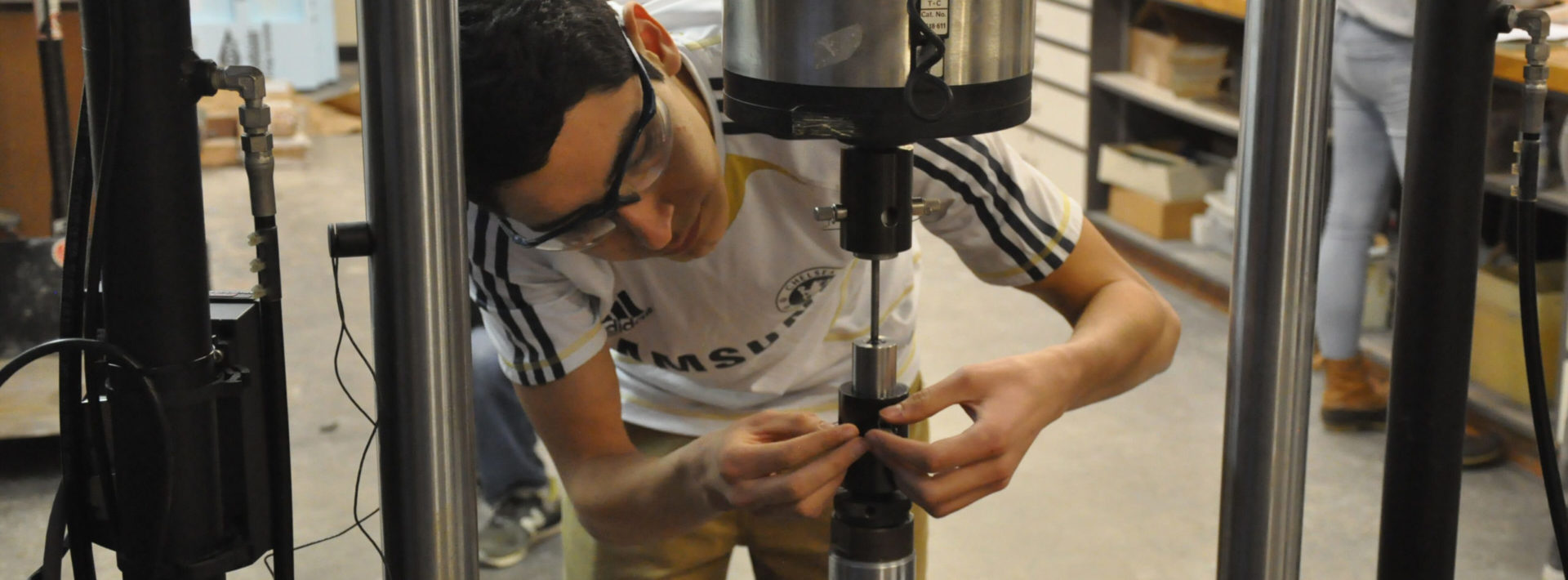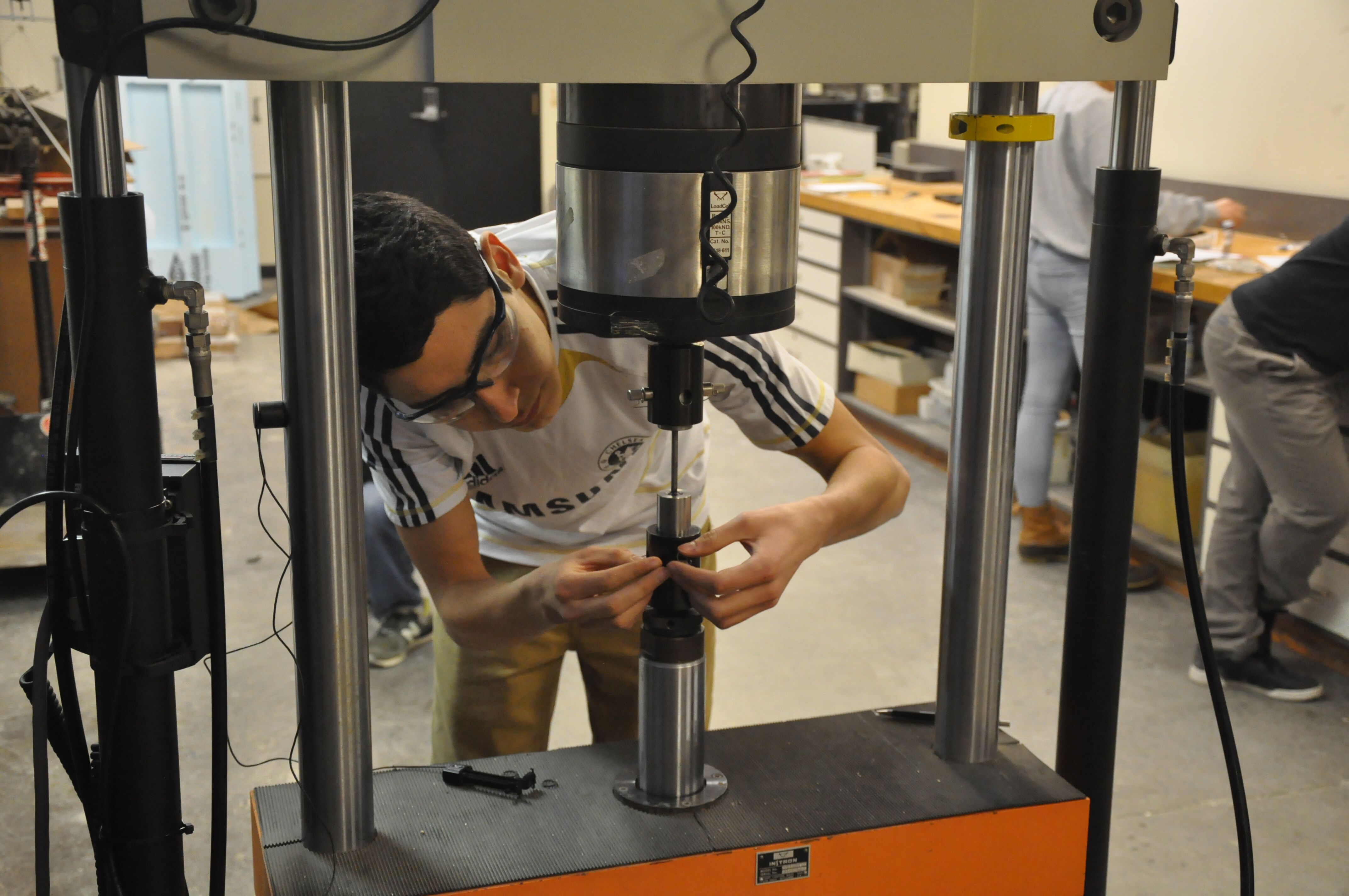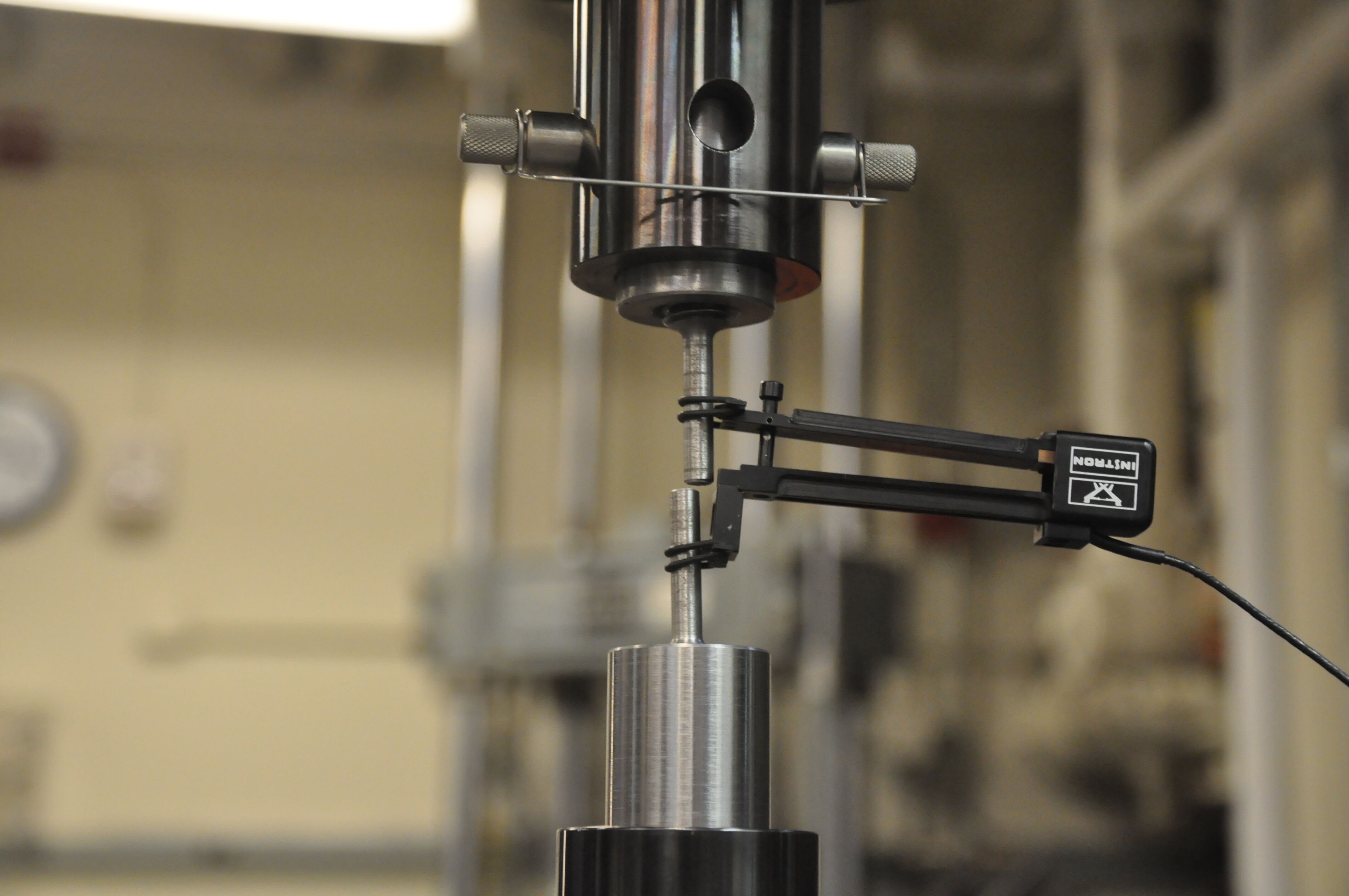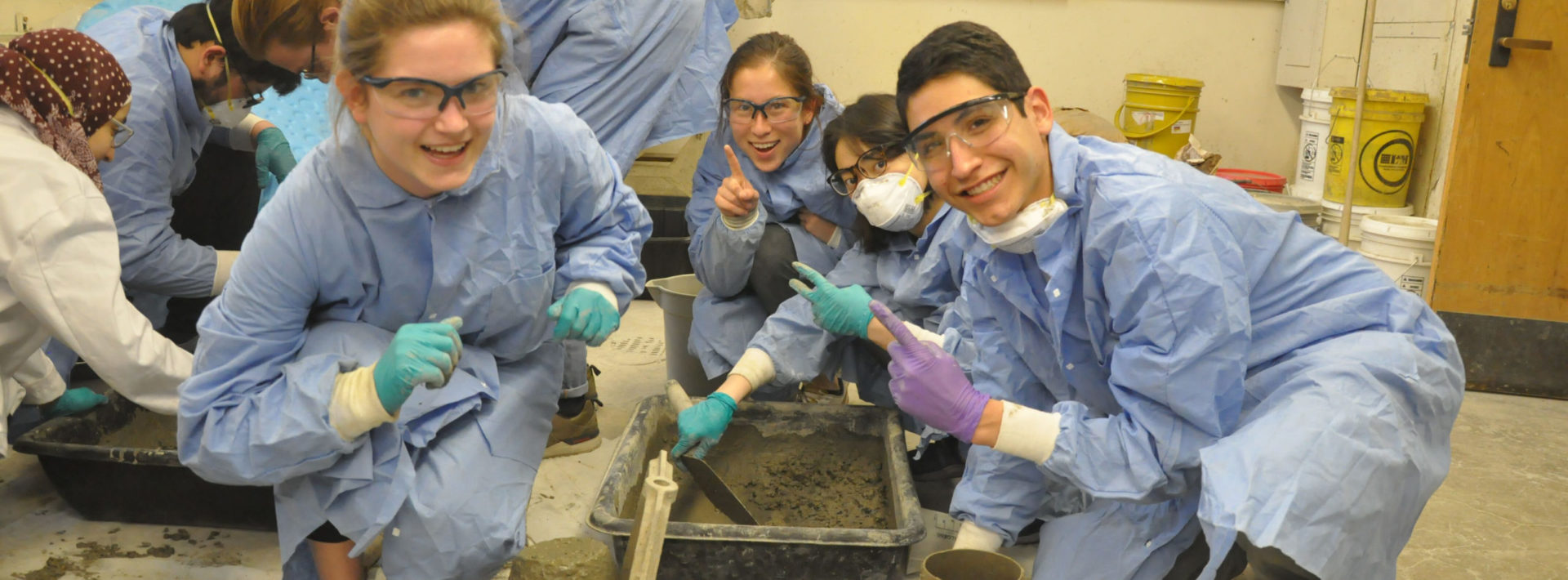Mechanics of Materials: Testing Tensile Strength

By Rayna Higuchi ’20
Hi CEE! I’m Rayna, a student in the Mechanics and Materials track, blogging about my experiences in Course 1. Today I’ll be talking about the class Mechanics of Materials (1.035), taught by Professor Ulm, with additional instructors Stephen Rudolph and Omar Al-Dajani.
The purpose of the lab we ran on March 5 was to study the elastic behavior of materials when subjected to a tensile (pulling) force. To do this, we took dogbone specimens, depicted below, of different alloy types. Before testing, we measured the width and length of the dogbone. We then screwed it into a hydraulic machine, capable of exerting a force of 22,000 pounds! For reference, I am 135 pounds. This machine can exert a force equivalent to me if I was stacked 163 times. If you’re familiar with the work Yertle the Turtle by Dr. Seuss, that would be a lot.
 Luke Bastian (’21) screws a dogbone into the hydraulic machine. Photo courtesy of Stephen Rudolph
Luke Bastian (’21) screws a dogbone into the hydraulic machine. Photo courtesy of Stephen Rudolph
As we pulled on the specimen, it originally elastically deformed. This means that once the pressure is released, the material will return to its original shape. As we continue to pull on it, the material begins to deform permanently. Consider when you bend an eraser: up to a certain point, the eraser will return to its original shape. This is elastic deformation. However, once you bend it far enough, you deform the eraser in ways that can’t be undone. This is plastic deformation. As a class, we tested ductile (stretchy) and brittle (crunchy) materials. We expect the brittle materials to break suddenly, and with little warning, while the ductile materials will slowly deform before breaking completely.
 The dogbones post-testing. If you look closely, for most of them there is a noticeable thinning around the point of fracture. However, the more brittle pieces lack this characteristic. For example, the middle piece labeled “Luke f140 steel quenched test 6”, there is little change in the diameter near the break. Photo courtesy of Stephen Rudolph.
The dogbones post-testing. If you look closely, for most of them there is a noticeable thinning around the point of fracture. However, the more brittle pieces lack this characteristic. For example, the middle piece labeled “Luke f140 steel quenched test 6”, there is little change in the diameter near the break. Photo courtesy of Stephen Rudolph.
We then remeasured the dogbone to see the change in diameter at the point of failure as well as the change in length. The loading graphs were stored by the machine and will help us find the material properties of the various alloys. As one might infer from the class name, this semester we hope to learn about the mechanical properties of materials. Within this category falls the material’s ability to support tensile load. Metals, specifically steel, are often used in tension. Bridge cables and rebar are examples that come immediately to mind.
This lab was super fun to do! In the past, I have mostly been working with cement and compressive loads. It was interesting to switch things up in both these regards, working with metals (ooh!) and tension (ahh!). When the dogbones broke they would make loud noises. Like dogs and small children, I find this exciting.
CEE you next time!
 Dogbone post-break, still in the hydraulic machine. The black object extending to the right is used to measure the change in length while the material is elastically deforming. Photo by Rayna Higuchi.
Dogbone post-break, still in the hydraulic machine. The black object extending to the right is used to measure the change in length while the material is elastically deforming. Photo by Rayna Higuchi.


